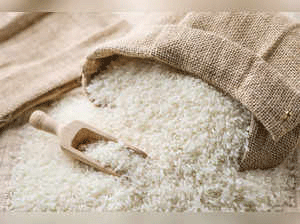To provide immediate economic relief amid escalating food prices, the Indian government launched Phase-II of the Bharat brand’s subsidized wheat flour and rice sales. Food Minister Pralhad Joshi inaugurated this phase on Tuesday, highlighting it as a strategic but temporary measure to stabilize consumer food costs.
Key Details of Phase-II
- Price Structure and Availability:
Wheat flour (atta) will be available at Rs 30 per kg and rice at Rs 34 per kg, both in 5kg and 10kg packages. This represents a slight increase from Phase-I, where wheat flour was priced at Rs 27.5 per kg and rice at Rs 29 per kg. The sales will be facilitated through cooperatives such as NCCF, Nafed, Kendriya Bhandar, and also via e-commerce platforms. - Allocated Resources:
For this intervention, the government has allocated 3.69 lakh tonnes of wheat and 2.91 lakh tonnes of rice from the Food Corporation of India (FCI) stocks. This significant allocation underlines the government’s effort to ensure widespread availability and prevent potential market inflation due to scarcity. - Temporary Measure with Possible Extensions:
Minister Joshi clarified that this initiative would persist until the allocated stock is fully distributed. If demand continues or prices remain volatile, further resources will be made available. He stressed that the government has sufficient reserves to extend support if necessary.
Addressing Consumer Needs
During the launch, Minister Joshi noted that lower sales of rice in Phase-I had sparked some concerns. Responding to these, he emphasized that the objective was purely consumer welfare, not profitability. Moreover, he mentioned the potential for introducing smaller packaging options if consumer demand indicated a need.
Implications for Agriculture and Food Supply Chains
This intervention is likely to have ripple effects across the agricultural and supply chain landscape. The government’s allocation from FCI reserves ensures market stabilization but also raises questions about long-term agricultural pricing and farmers’ earnings. By keeping wheat and rice prices low for consumers, there could be a dual impact:
- Consumer Relief: The scheme protects households from food inflation, which has been a critical issue, particularly post-pandemic.
- Agricultural Concerns: Sustained lower prices might disincentivize farmers from cultivating staple crops in the long run unless complemented by adequate support mechanisms, such as subsidies or minimum support prices (MSP).
Looking Ahead: What Experts Are Saying
Economists and agricultural experts are keenly observing the impact of such price interventions on both consumers and producers. While the government’s Price Stabilisation Fund is a crucial tool for short-term relief, long-term agricultural sustainability and fair pricing for farmers remain pressing concerns. The situation calls for a balanced approach to ensure that while consumers get affordable essentials, farmers do not suffer from suppressed market rates.
The government’s Phase-II launch of subsidized wheat flour and rice sales is a proactive step toward protecting consumers from inflation. However, sustaining agricultural productivity and farmer welfare will require ongoing policy adjustments and support. As food security remains a top priority, effective management of both ends—consumption and production—will be essential for lasting stability.
Error




